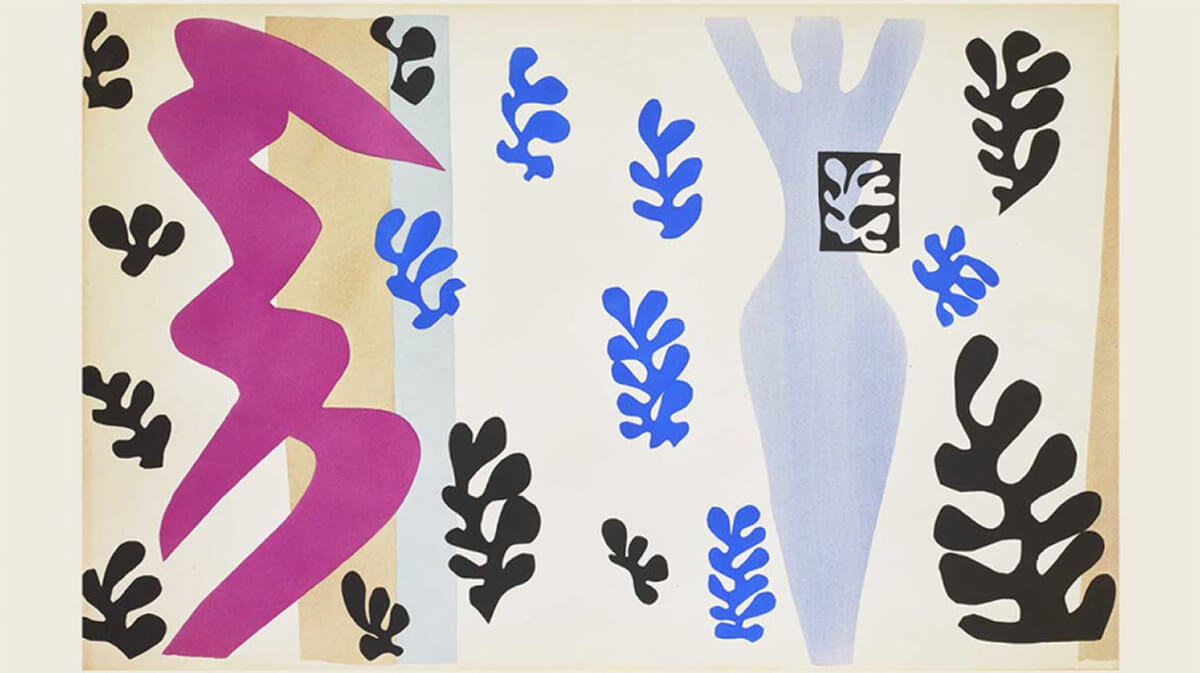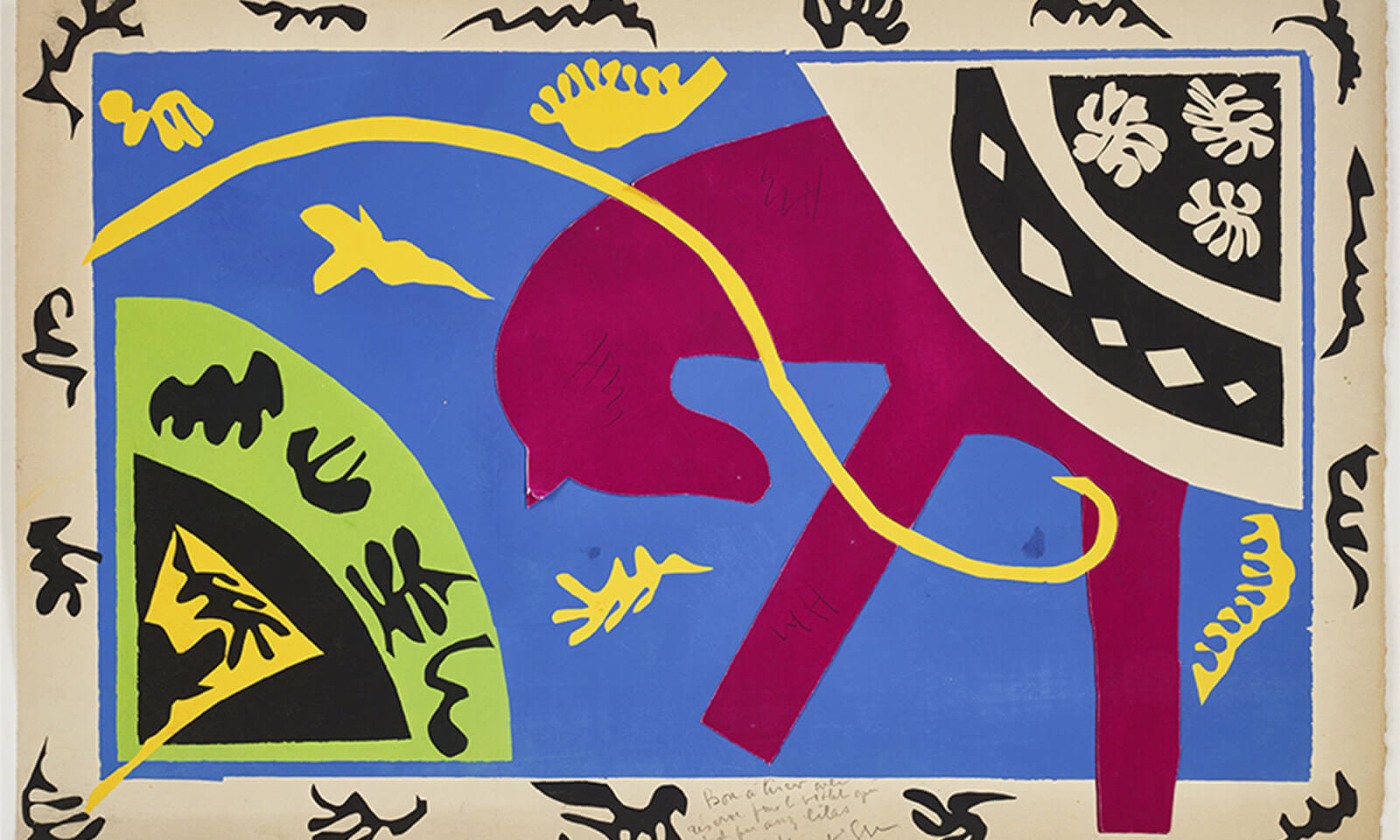Henri Matisse exhibition, Jazz, final proofs
A major exhibition is at the Galerie de l’Institut in Paris until 23 April 2022: Henri Matisse, “Jazz“, the previously unseen final proofs of the compositions produced for the famous book published by Tériade in 1947. The exhibition features a unique set of the artist’s pochoirs (stencil prints) and paper cut-out collages.
This work was the fruit of a collaboration with Tériade. The Greek-born art critic was, from 1929 onwards and practically until his death, Matisse’s privileged artistic confidant. It is Katina, Tériade’s goddaughter, and her husband Costa who have entrusted this set of twenty unique plates, which were in fact the final proofs for Jazz, to the Galerie de l’Institut. Katina was given the plates as a wedding present.
The proofs are pochoirs made from the original maquettes to which Matisse had added, in some cases, pencil annotations and, in others, pieces of gouache-painted paper which cover over the shapes when the colour obtained by the pochoir technique was not exactly what he wanted. Finally, the artist initialled the alterations and added the traditional annotation “Bon à tirer” (passed for press) or simply a “B” to the proofs.
The works in the Jazz series are made with shapes cut out of gouache-painted paper and pasted onto Velin d’ARCHES® paper.
Velin d’ARCHES – Arches Papers (arches-papers.com)
Jazz in Matisse’s work
Created between 1943 and 1947, the Jazz book is a key work in Henri Matisse’s oeuvre. It was a laboratory that allowed him to transition from painting to the paper cut-out technique, which he developed in the last decade of his life. It contains many masterpieces, including The Cowboy, The Knife Thrower, Toboggan and Icarus. Jazz is a set of twenty colourful plates punctuated with pages of text.

It was for Jazz that Matisse first used paper cut-outs, a technique which, from 1948 onwards, would become his preferred means of expression, combining drawing, colour and sculpture. The artist made the gouache-painted paper cut-outs between June 1943 and summer 1944. In the book, they are reproduced using the pochoir stencil technique with exactly the same gouaches. Then he drafted his texts and wrote them by hand with a reed pen and ink on the blank white pages in a monumental script designed in 1946.
Matisse had already begun to use paper cut-outs in solid colours on occasion in the middle of the 1930s. But the war, and perhaps even more, the serious surgery he underwent in 1941 led to a new phase of research. Nicknamed “the resurrected one” in the hospital, Matisse did in fact consider that he had been granted a second life as he entered old age. The technique of painting paper with gouache and then cutting out shapes with scissors, assembling and pasting them, conveyed more directly and simply than ever an emotion that remained intact, the freshness of first sensations. It is remarkable that he should have found this technique in spite (or because) of his age and mastery. Jazz opened the way to a synthetic technique in which colour was at once form, outline, surface, density, depth and movement.
“Instead of drawing the outline and putting the colour inside it – the one modifying the other – I draw straight into the colour, which will be the more measured as it will not be transposed. This simplification ensures an accuracy in the union of the two means, which become simply one”
Henri Matisse 1951.





